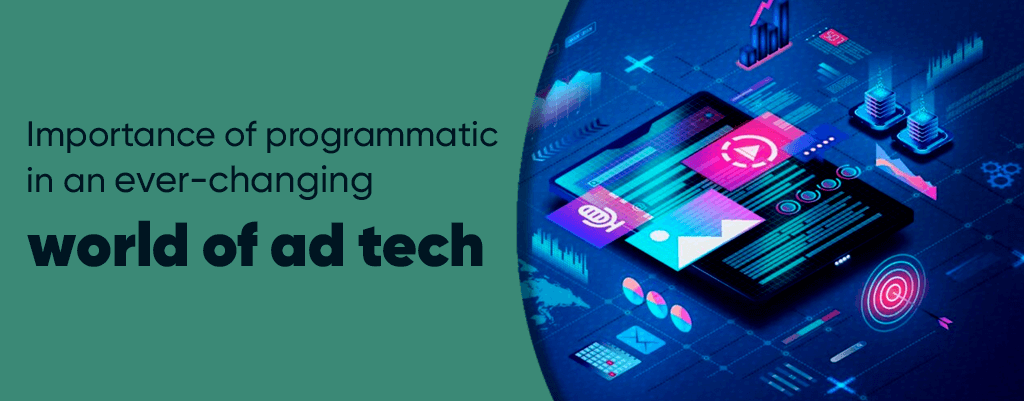Importance of Programmatic in an Ever-Changing World of Ad Tech
PUBLISH DATE: 22 August 2022
In the last few years, advertising and marketing world has witnessed a huge evolution in the digital world. Brands have now the need to evolve along with these advanced artificial intelligence (AI) technologies. Many experts have been vocal about solving problems of new ad technology and how to get the best that it out there in the marketing world.
In 2020 programmatic advertising continued to rise with real-time bidding (RTB) media purchases making up over 80% of media buying in the US. There is no second thought that programmatic media buying is here to stay and will continue to be a key element for new media types.
There has been a dramatic shifts towards programmatic buying, as traditional advertising has crossed over by adopting RTB methods. Media buyers prefer programmatic buying as it allows them to extend linear TV reach with a much better precision and enhanced reporting capabilities. Slowly, but eventually, traditional media types like out-of-home and radio are getting modernized, allowing programmatic buying through integrations with various demand-side platforms.
Now that we have understood the shift and how programmatic advertising is a game changer in adtech, let’s dive a little deeper into programmatic advertising. Shall we?
For any advertising transaction, there are two main players – advertisers, and publishers. An advertiser is a brand or a company that wants to get its product or service be introduced to its target audience. The main agenda for doing this is to build brand awareness, develop brand loyalty, and increase sales.
On the other hand, a publisher can be defined as a company that produces content which in turn attracts the audience. A publisher could be a newspaper, or a video streaming service.
With greater efficiencies in targeting and tracking from DSPs and cross-channel platforms, there is a high possibility for both of them to move beyond the traditional marketing metrics.
When it comes to business outcomes, it doesn’t really matter how many clicks you have got unless they generate revenue. Outcome-based metrics only help in growing quality interaction while creating awareness at the top of the funnel. In combination with other tactics, programmatic advertising can also help to feed cross- channel effectiveness and allow marketers to measure the true outcome of their ad campaign.
Third party cookies deprecation and privacy (it will be a reality soon)
Even though Google has delayed blocking of third-party cookies, the shift will happen eventually. Apple has already made itself comfortable with the third-party cookies deprecation by making anonymized emails available for publisher registrations, and prioritizing user privacy. These changes sounds a lot but don’t need to incite panic among marketers. These changes place a higher value on first-party data.
Marketers that have been engaging with their customers and have built transparent consented first-party data will have added advantage through the next set of changes that are going to happen. Since first-party data is coming more into the limelight, many companies are going extra mile for creating innovative wats to gather the data. Publishers and companies are collecting data through email addresses from newsletters, coupons, data exchanges and content paywalls.
As these changes to third-party data will take place, power is shifting back to individuals’ choice. These changes are set to bring more transparency, more responsibility, better accuracy, and more rights for users. People around the world desire transparent solutions and local selection that is best suited for them. Understand that data targeting is not going away, but when it is done right, it will only get better.







